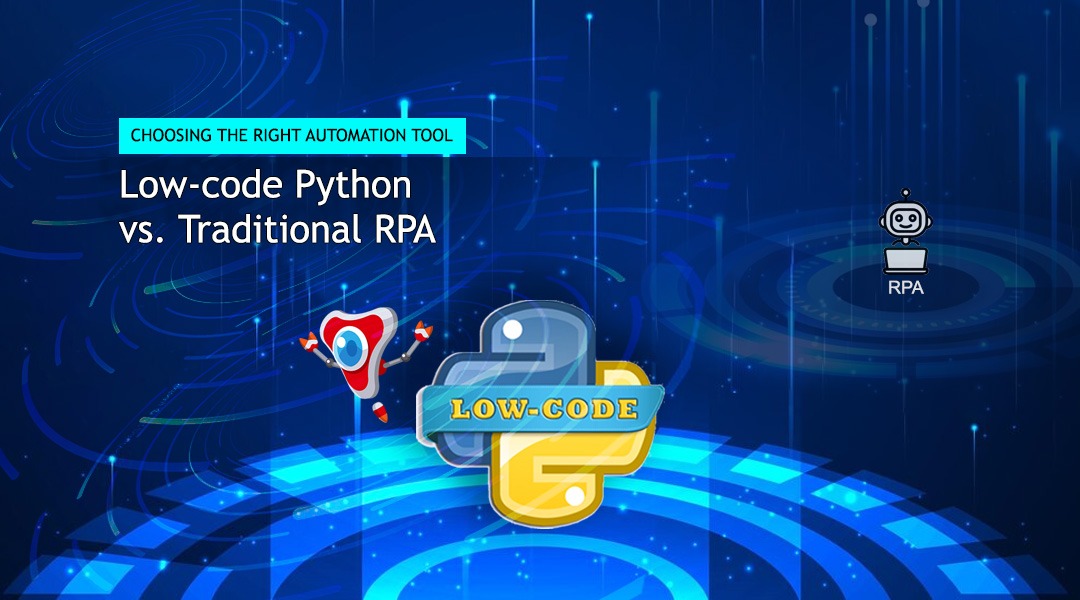
Decision-makers often face the challenge of choosing the right automation tool for their needs. This blog post differentiates between Low-code Python and Traditional RPA (Robotic Process Automation), highlighting the advantages of each approach, with a focus on Argos Low-code Python and its use cases.
Table 1: Low-code Python vs. Traditional RPA
Feature | Low-code Python | Traditional RPA |
Coding knowledge required | Minimal | Moderate to advanced |
Development speed | Faster | Slower |
Flexibility | High | Moderate |
Scalability | High | Moderate |
Learning curve | Easier | Steeper |
Cost | Significantly lower | Can be higher |
Understanding the Differences:
Low-code Python:
- It’s actually Python! It’s low-code and fully manageable
- Focuses on rapid development with pre-built components and visual interfaces.
- Requires minimal coding knowledge, making it accessible to users with less technical expertise.
- Offers higher flexibility for complex workflows and integrations.
- Argos Low-code Python is an example, providing a user-friendly platform for building automated workflows using Python.
Traditional RPA:
- Relies on scripting languages like Python or Java, requiring more coding knowledge.
- Offers a slower development process due to the need for manual scripting.
- Provides moderate flexibility for automating repetitive tasks.
Use Cases for Argos Low-code Python:
- Data extraction and manipulation: Automating processes like collecting data from websites and spreadsheets.
- Email and document automation: Sending and processing emails, generating reports, and formatting documents automatically.
- Desktop automation: Automating repetitive tasks on your computer, such as filling out forms or clicking buttons.
- API integrations: Connecting with various applications and databases to exchange data seamlessly.
Simple data analysis: Performing basic data analysis and visualization tasks.
Why Choose Argos Low-code Python?
- Faster development: Build automated workflows quickly with minimal coding.
- Easy to use: User-friendly interface simplifies the automation process.
- Scalable: Adapts to growing needs and complex workflows.
Cost-effective: Potentially lower development and maintenance costs compared to traditional RPA.
Conclusion
Both Low-code Python and Traditional RPA offer valuable automation capabilities. Choosing the right tool depends on your specific needs, technical expertise, and budget. For users seeking a user-friendly, scalable, and cost-effective solution, Argos Low-code Python presents a compelling option for automating a diverse range of tasks.





